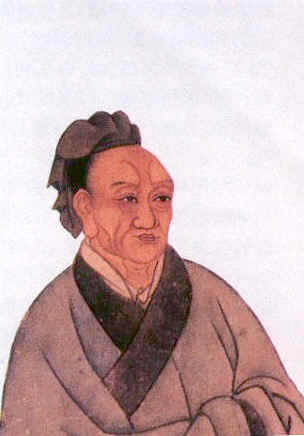Classical Chinese Literature

Classical Poetry
The rich tradition of Chinese poetry began with two influential collections. In northern China, the Shijing or Classic of Poetry (approx. 10th–7th century BC) comprises over 300 poems in a variety of styles ranging from those with a strong suggestion of folk music to ceremonial hymns. The word shi has the basic meaning of poem or poetry, as well as its use in criticism to describe one of China's lyrical poetic genres. Confucius is traditionally credited with editing the Shijing. Its stately verses are usually composed of couplets with lines of four characters each (or four syllables, as Chinese characters are monosyllabic), and a formal structure of end rhymes. Many of these early poems establish the later tradition of starting with a description of nature that leads into emotionally expressive statements, known as bi, xing, or sometime bixing. Associated with what was then considered to be southern China, the Chuci is ascribed to Qu Yuan (c. 340–278 BC) and his follower Song Yu (fl. 3rd century BC) and is distinguished by its more emotionally intense affect, often full of despair and descriptions of the fantastic. In some of its sections, the Chu Ci uses a six-character per line meter, dividing these lines into couplets separated in the middle by a strong caesura, producing a driving and dramatic rhythm. Both the Shijing and the Chuci have remained influential throughout Chinese history.
Classical Fiction and Drama
Chinese fiction was rooted in the official histories and such less formal works as A New Account of the Tales of the World and Investigations of the Supernatural (4th and 5th century); Finest Flowers from the World of Letters (a 10th-century compilation of works from earlier centuries); Great Tang Record of the Western Regions completed by the pilgrim to India, Xuanzang in 646; Variety Dishes from Youyang, the best known collection of Classical Chinese Chuanqi (Marvelous Tales) from the Tang dynasty; and the Taiping Guangji, which preserved the corpus of these Tang dynasty tales. There was a range of less formal works either oral or using oral conventions, such as the bianwen (Buddhist tale), pinghua (plain tale), and huaben (novella), which formed background to the novel as early as the Song Dynasty. The novel as an extended prose narrative which realistically creates a believable world of its own evolved in China and in Europe from the 14th–18th centuries, though a little earlier in China. Chinese audiences were more interested in history and Chinese authors generally did not present their works as fictional. Readers appreciated relative optimism, moral humanism, relative emphasis on group behavior, and welfare of the society.
With the rise of monetary economy and urbanization beginning in the Song Dynasty, there was a growing professionalization of entertainment fostered by the spread of printing, the rise of literacy and education. In both China and Europe, the novel gradually became more autobiographical and serious in exploration of social, moral, and philosophical problems. Chinese fiction of the late Ming dynasty and early Qing dynasty was varied, self-conscious, and experimental. In China, however, there was no counterpart to the 19th-century European explosion of revolution and romanticism. The novels of the Ming and early Qing dynasties, represented a pinnacle of classical Chinese fiction.
